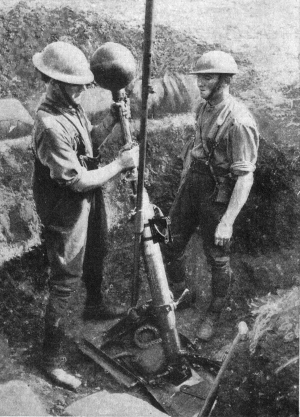 |
| "Are you sure this silly looking thing will work?" |
Many indirect fire weapons use a Spotter. The Spotter is a model or models associated with the weapon. It always moves as a separate unit from its parent. The firing unit may trace line of sight from the Spotter when firing at a target.
Most indirect fire weapons are terrifying explosive weapons. They usually cause more Suppression than normal firing. This will be indicated as Suppression X, where X is a multiplier applied to the number of wounds inflicted for purposes of determining Suppression. So for a Suppression 3 weapon, each Wound inflicted counts as 3 Wounds for counting Suppression only.
Many indirect fire weapons, such as artillery, are too clumsy (or dangerous) to fire in the Firefight phase. These have the No Firefight rule. They may only be fired in the Shooting phase.
Other indirect fire weapons, such as grenades, are so short-ranged as to only be useful in the Firefight phase. These have the Firefight Only rule. They may only be fired in the Firefight phase.
Geek Notes
With these rules, I'm laying the groundwork to describe artillery, mortars and grenades for a historical or quasi-historical modern army. (Such as the Martian Colonials.)









No comments :
Post a Comment